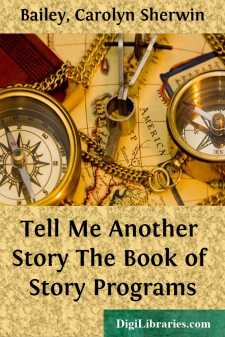Categories
- Antiques & Collectibles 13
- Architecture 36
- Art 48
- Bibles 22
- Biography & Autobiography 813
- Body, Mind & Spirit 142
- Business & Economics 28
- Children's Books 17
- Children's Fiction 14
- Computers 4
- Cooking 94
- Crafts & Hobbies 4
- Drama 346
- Education 46
- Family & Relationships 57
- Fiction 11829
- Games 19
- Gardening 17
- Health & Fitness 34
- History 1377
- House & Home 1
- Humor 147
- Juvenile Fiction 1873
- Juvenile Nonfiction 202
- Language Arts & Disciplines 88
- Law 16
- Literary Collections 686
- Literary Criticism 179
- Mathematics 13
- Medical 41
- Music 40
- Nature 179
- Non-Classifiable 1768
- Performing Arts 7
- Periodicals 1453
- Philosophy 64
- Photography 2
- Poetry 896
- Political Science 203
- Psychology 42
- Reference 154
- Religion 513
- Science 126
- Self-Help 84
- Social Science 81
- Sports & Recreation 34
- Study Aids 3
- Technology & Engineering 59
- Transportation 23
- Travel 463
- True Crime 29
Our website is made possible by displaying online advertisements to our visitors.
Please consider supporting us by disabling your ad blocker.
Tell Me Another Story The Book of Story Programs
Categories:
Description:
Excerpt
Preface
The reward of the story-teller who has successfully met the child's story interest is the plea embodied in the title of this book: "Tell me another story." The book meets this child longing on a psychologic basis. It consists of groups of stories arranged so that their telling will result in definite mental growth for children, as well as satisfied story hunger.
There has been a tendency in the past to group stories in a haphazard way; there has been no organized plan of selecting stories to precede and follow one another for the purpose of definite functioning of mind processes. The effect of one story of distinctly differentiated theme from one which has just been told is to break continuity of thought. On the other hand, stories of similar theme, but contrasting form told in the story-hour have a mental effect of concentration and will training. This mental growth through stories is the aim of the book.
The instinctive and universal interests of all children form the themes of the story programs; and these interests are presented in their natural order for a year, beginning with home life, taking the child out into the world, and carrying him through his school, industrial, seasonable, and holiday activities. Three stories have been grouped in each program as the number upon which children can most easily fix their attention.
The plan of grouping the stories in each program is very definite and psychologic. The first story in a group is an apperceptive one; it secures the child's spontaneous attention because, through its plot, it touches his own life in some way. It brings him into close and intimate touch with the interest theme of the program because it speaks of things that he knows, and other things that he can do. The second story in each group makes an appeal to the child's reasoning powers; having secured his attention through the apperceptive story, the story-teller now takes the child a-field, mentally, and secures his voluntary attention. It calls for constructive thought; it presents the theme of the program in a broader way, with wider application. It is, usually, the longest story of the program. The third story is, invariably, the dessert of this story meal. Through its brevity, humor, tenderness, or sharply contrasting treatment of the program theme, it supplies the necessary relaxation, the fitting climax for the program.
An analysis of the Trade Life program will illustrate the psychologic appeal upon which the book is built. The story, The Holiday, opens the program with its apperceptive appeal, showing the dependence of the home upon the industrial life of the community and the possibility of a child's coöperation in it. The second story in the trade program, Selma Lagerloöf's Nils and the Bear, gives this wonderful Swedish writer's presentation of the iron industry as a factor in our growth from savagery to civilization. The third story, The Giant Energy and Fairy Skill, by Maud Lindsay, gives the program its climax in fantasy and contrast....


